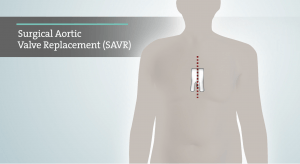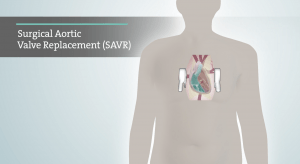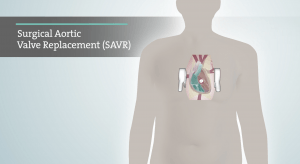Surgical aortic valve replacement through open heart surgery
Once your aortic stenosis becomes severe, and you begin to have symptoms, getting treated immediately is important. Severe aortic stenosis can be treated by replacing your aortic heart valve. One way this can be done is through open heart surgery (also called surgical aortic valve replacement).1
Surgical aortic valve replacement is a type of open heart surgery that is performed to replace a diseased aortic valve. It is typically more invasive than TAVI and requires a patient be placed on a heart and lung blood machine while under general anaesthesia.2
Despite longer recovery times, open heart surgery is a very common, well-established procedure. More than 200,000 surgical valve procedures are performed across the world each year.3,4
Open heart surgery: step-by-step
Open heart surgery: step-by-step
Step 1 of 4
Open heart surgery is a major surgical operation and it may take some time to recover. Talk to your doctor about what you can expect from recovery.
Serious complications, sometimes leading to re-operation or death, may be associated with open heart surgery. Other risks include stroke, infection, bleeding, abnormal heart rhythms, heart attack, kidney problems, etc.5
There are other options besides open heart surgery to treat severe aortic stenosis. Explore TAVI and learn if the procedure may be right for you.
Join Email list
Sign up todayHeart Centre locator
Search now
Carabello BA, Introduction to Aortic Stenosis. Cir Res. 2013;113:179-185.
NHS.uk Aortic valve replacement, 2018.
Brown JM, O’Brien SM, et al. Isolated aortic valve replacement in North America comprising 108,687 patients in 10 years: changes in risks, valve types, and outcomes in the Society of Thoracic Surgeons National Database. J Thorac Cardiovasc Surg 2009;137:82–90.
Reynolds et al. Quality of Life After TAVI Versus AVR. Pub Health 2021;548-58.
NHS.uk Aortic valve replacement – Risks, 2018.



